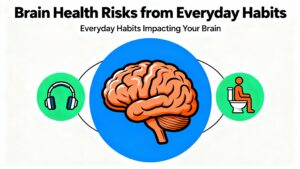With Delhi still choking under the weight of smog, the regional Air Quality Index (AQI) has dropped back into the “severe” category.
Many people are worried about their lungs; however, doctors have warned that the eyes are one of the first organs affected by air pollution. Increased cases of redness, itching, dryness, and burning sensations in the eyes have been reported as pollution rises in the National Capital Region (NCR) of India.
Dr. Anurag Wahi, Senior Consultant at Sharp Sight Eye Hospitals, states that polluted air or air with some level of smog can cause immediate reactions or responses in the eye. “The eyes are the first organ to respond,” he states. “The first signs are commonly redness, itching, burning, watery eyes, or a sensation of sand or a foreign body in the eye. Some people might also have some blurred vision or more sensitivity to light.” He explains that these symptoms are the eyes’ natural responses to pollutants and fine dust particles. These should not be ignored, however, since they can lead to further discomfort, or in some cases, infection, especially given the longer smog seasons we have in Delhi.
Mild irritation will usually ease fairly quickly when one goes to a clean area, closes their eyes, or flushes them with clean water. But remember, if the irritation does not clear within two or three days, it is always a good idea to speak to a doctor. “If you are experiencing moderate to severe pain, swelling, discharge or abrupt change in vision, seek care from an eye doctor immediately,” Dr. Wahi says. These symptoms can be signs of eye infection, allergy or even corneal damage that should be assessed quickly.
While pollution cannot be fully avoided, Dr. Wahi suggests that a few lifestyle changes can significantly enhance your well-being. Try to use lubricating eye drops or artificial tears for added moisture and for prevention of dry eye. Hydration also plays a key role, as dehydration can act as an irritant. He suggests a diet rich in Omega-3 fatty acids and vitamins A, C, and E found in foods like flaxseeds, walnuts, fish, carrots, citrus fruits, and leafy greens—all of which support eye health and resilience to environmental stressors.
Although masks are initially designed to protect the lungs, they can also help reduce exposure to fine pollutants around the eyes by limiting the contact of dust to the face. Dr. Wahi also emphasizes the importance of air purifiers in enclosed spaces, which lower pollution levels inside your home, providing comfort for the eyes and respiratory system. Additionally, people who wear contact lenses should be especially wary. “On days with high levels of smog, it is more advisable to not wear contact lenses, when possible,” Dr. Wahi says. “If you must, be sure to clean and disinfect them well, and use rewetting drops to keep your eyes feeling comfortable.” He also suggests that glasses are, in fact, better than contact lenses as they can act as a protective layer from pollutants. Given the state of air quality in Delhi with no signs of improvement, taking care of your eyes is much less an option than it is a requirement. Be hydrating, eating right, using eye drops, air purifiers, and glasses may seem like small precautionary measures, but they all matter. “A little bit goes a long way today so you can have vision tomorrow,” is what Dr. Wahi reminds everyone.












More Stories
Neurologist Warns: These 3 Everyday Habits Could Be Silently Damaging Your Brain
Fitness Trainer Reveals the Body’s Most Underrated Weapon Against Diabetes—‘Muscle Can Soak Up Glucose Even Without Insulin’
Global Obesity Crisis: New Weight-Loss Drugs Bring Hope, But Prevention Still Holds the Key